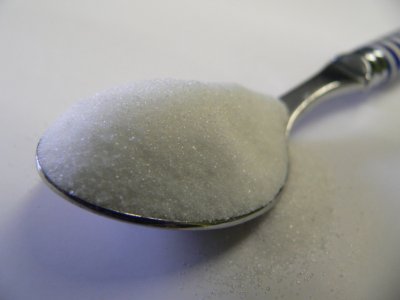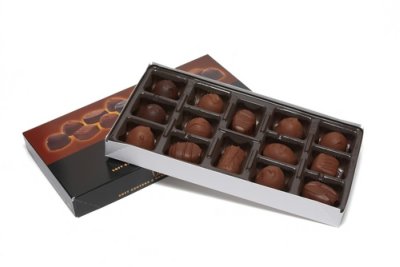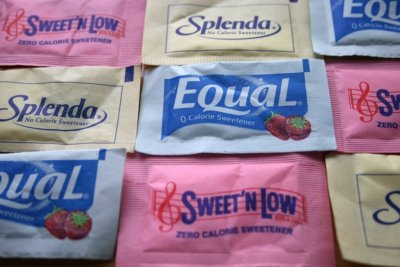Nutritive and Nonnutritive Sweeteners
The sweeteners have become a regular component in our meals.
How come?
There is no doubt that from the 4 basic tastes: sweet, salty, bitter, and sour, the first one is our favorite.
Once someone becomes diabetic, this privilege, to enjoy the sugar sweetness, is no longer allowed.
The first and most important step to get a good balance in the diabetic diet is to reduce the amount of the foods which contain sugar, and that contradicts with the sugar craving.
Most of the diabetic people find it very much frustrating and even depressing.
They desperately look for a solution.
First of all, most of them don't know that today there is no absolute prohibition on eating simple sugars.
You can include in your diet up to 10% of your carb consumption.
Just because of the simple fact that most diabetic people don't know and can't know where the 10% limit begins and ends they keep avoiding simple sugars.

So what these people can do?
They can use substitutes, natural or artificial sweeteners. Here are some of them.
Nutritive Sweeteners
Fructose
Fructose is a monosaccharide (simple sugar), which the body can use for energy.
Because it has a low glycemic index it does not cause the blood sugar level to rise tremendously.
It was once thought that fructose was a good substitute for sucrose (table sugar). However, the American Diabetes Association and nutritional experts have changed their minds about this.
A small amount of fructose, such as the amount found in most vegetables and fruits, is not a bad thing.
In fact, there is evidence that a little bit may help your body process glucose properly.
However, consuming too much fructose at once seems to overwhelm the body's capacity to process it. The diets of our ancestors contained only very small amounts of fructose.
These days, estimates are that about 10% of the modern diet comes from fructose.
Most of the carbohydrates we eat are made up of chains of glucose.
When glucose enters the bloodstream, the body releases insulin to help regulate it.
Fructose, on the other hand, is processed in the liver. To greatly simplify the situation: When too much fructose enters the liver, the liver can't process it all fast enough for the body to use as sugar. Instead, it starts making fats from the fructose and sending them off into the bloodstream as triglycerides.
This can increase the risk for a heart disease and there is also evidence for developing insulin resistance.

Sugar Alcohols
Such as: Isomalt, Maltitol, Lactitol, Mannitol, Sorbitol, Xylitoland more.
As a group, sugar alcohols are not as sweet as sucrose, and they contain fewer calories than sucrose.
Their flavor is like sucrose. Sugar alcohols are not metabolized by oral bacteria, and so they do not contribute to tooth decay.
Sugar alcohols are usually incompletely absorbed into the blood stream from the small intestines which generally results in a smaller change in blood glucose than "regular" sugar (sucrose).
This property makes them popular among diabetics and people on low carbohydrate diet.
However, like many other incompletely digestible substances, overconsumption of sugar alcohols can lead to bloating, diarrhea, and flatulence because they are not absorbed in the small intestine.
The sugar alcohols are used in production of sugar-free candies, chewing gums, ice cream, cakes and jams.
Nonnutritive Sweeteners
These artificial sunstitutes have no nutritional value and therefore don't harm our dental health.
Saccharin
Saccharin was first produced in 1878 and accidentally was discovered as an intensive sweetener (300 times more than sugar).
In many countries where substitutes are legal this is the most common sweetener.
The Saccharin (also known as Sweet 'n' Low) is an artificial one, which because of its basic substance, benzoic sulfimide, has effectively no nutritional value.
Although Saccharin is much sweeter than sugar, it still has an unpleasant bitter or metallic aftertaste, especially at high concentrations.
In countries where Saccharin is allowed as a food additive, it is used to sweeten products such as drinks, candies, medicines, and toothpaste.
In 1977, after the publication of a study indicating an increased rate of bladder cancer in rats which were fed with large doses of saccharin, the U.S. Congress required that all saccharin-containing foods display a warning label indicating that saccharin may be a cause to cancer.
No study since then performed on saccharin has ever shown a clear causal relationship between saccharin consumption and health risks in humans at normal doses.
Furthermore, other studies have shown that rats can get bladder cancer from any substance of high doses injected to them, including simple water and pure honey.

Therefore, in 2000, the U.S. Congress repealed the law requiring saccharin products to carry health warning labels.
Cyclamate
The Cyclamate, like many other artificial sugar substitutes, was also discovered by accident.
It was discovered in 1937 at the University of Illinois by graduate student Michael Sveda.
Cyclamate is 30–50 times sweeter than sugar (depending on concentration). Some people find it to have an unpleasant aftertaste, but generally less so than Saccharin.
It is often used synergistically with other artificial sugar substitutes, especially Saccharin.
The mixture of 10 parts Cyclamate to 1 part Saccharin is common and masks the off-tastes of both sweeteners. It is less expensive than most sugar substitutes, including Sucralose, and is stable under heating.
Same studies have showed, like in the Saccharin case, that Cyclamate increases the incidence of bladder cancer in rats.
New studies in the 80-s revoke those bad results.
Although the FDA has stated that a review of all available evidence does not implicate Cyclamate as a cause of cancer in mice or rats, Cyclamate remains banned from food products in the United States.
Aspartame
Aspartame is another artificial sugar substitute, also known as Equal or NutraSweet or Canderel.
It was first synthesized in 1965. Its use in food products was approved by the American FDA in 1980.
Because its breakdown products include phenylalanine, aspartame is among the many substances that must be avoided by people with phenylketonuria (PKU), a rare genetic condition.
Aspartame is 200 times sweeter than sugar without the high energy value of sugar.
The quantity of aspartame needed to produce a sweet taste is so small that its caloric contribution is negligible, which makes it a popular sweetener for those trying to avoid calories from sugar.
The taste of aspartame is not identical to that of sugar.
Aspartame is not stable under heating and may break down. That makes it useless as a baking and cooking sweetener but very desirable in soft drinks.
Sucralose
Sucralose is an artificial sweetener with zero calories.
Sucralose is also known as Splenda or SucraPlus.
It had been approved in the United States in 1998 and in the European Union in 2004.
In 2008, it had been approved in over 80 countries, including Mexico, Brazil, China, India and Japan.
Unlike aspartame, it is stable under heat and over a broad range of PH conditions. Therefore, it can be used in baking or in products that require a longer shelf life.
Because of that Sucralose can be found in more than 4,500 food and beverage products.
It has also a vast usage because it is has zero calories, does not promote dental cavities, and is safe for consumption by diabetics.
The commercial success of Sucralose-based products stems from its favorable comparison to other low-calorie sugar substitutes in terms of taste, stability, and safety.
Summary
We can bring back the sweetness to our diabetic diet, but it has to be in a controllable way.
Two important things to remember:
- Both in plain sugars or artificial sweeteners, the consumption should be under the control of your personal dietitian who will guide you and plan a tailored diet for you.
This diet should include your allowed daily carbs and the sweet foods with no sugar in them. - Use the written data on the labels of the food packages. This data is essential for planning your mills.
Look at the grams of total carbohydrate, rather than the grams of sugar. Total carbohydrate on the label includes sugar, complex carbohydrate, and fiber.
If you look only at the sugar number, you may end up excluding nutritious foods such as fruits and milks thinking they are too high in sugar. You might also overeat foods such as cereals and grains that have no natural or added sugar, but do contain a lot of carbohydrate.
|
Return from Sweeteners to Diabetes Articles |